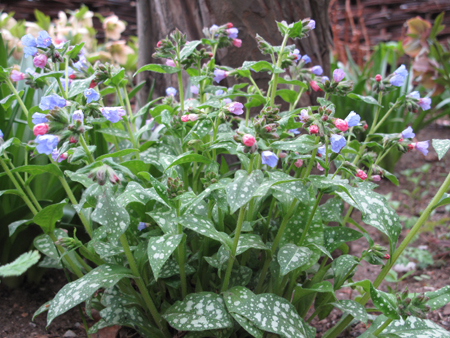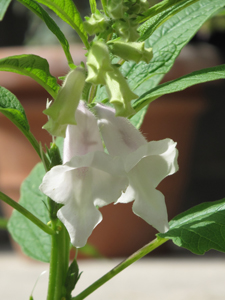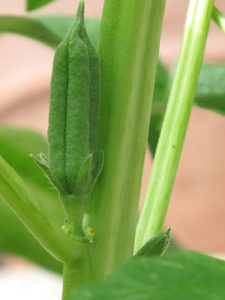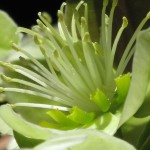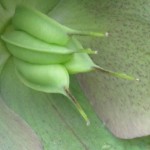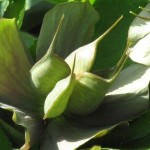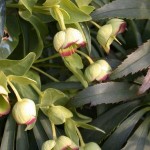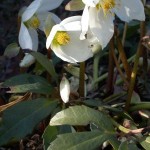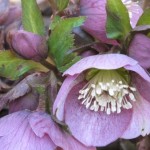Above, from right to left: The showy stamens of the hellebore will shrivel and drop off, but the flowers will be attractive for many weeks more; the long-lasting sepals and the seed capsules they surround provide a second phase of beauty and interest; the sepals and seed capsules darken in color as they mature. Photographs by Corey Eilhardt.
Hellebores are among the earliest flowers to come in our gardens, but they are slow to go, unlike the snowdrops that bloom only for a short while in late winter and early spring. The hellebore flowers that appear in February-March lose their showy stamens in April, but the persistent sepals and the ripening seed capsules are beautiful and will last for many weeks longer.
There are some twenty species of Helleborus, native to Europe, Turkey, and the Caucasus, and many crosses have now been made between them.??Since these??cultivated forms are beautiful, various, hardy, undemanding, vigorous, and drought-tolerant, they have become very popular garden plants. Hellebores are now being bred to??bear more upright flowers, so they can be more easily admired, and a wide variety of colored and freckled forms, including blue and black-flowered cultivars, are available to collectors. For information on hybrid forms, see “Hybridizing Helleborus niger (PDF)” on the Royal Horticultural Society website.
These winter-blooming plants are dormant in summer, and cope well with dry shade; they require little maintenance beyond the removal of old foliage in fall or late winter. They self-seed freely and are easily propagated by division. For comprehensive information on knowing and growing them well, see Hellebores.
For a history of????hellebore species??used in??ancient and medieval medicine, see “Hell Flowers,”??March 24, 2010.
???Deirdre Larkin

